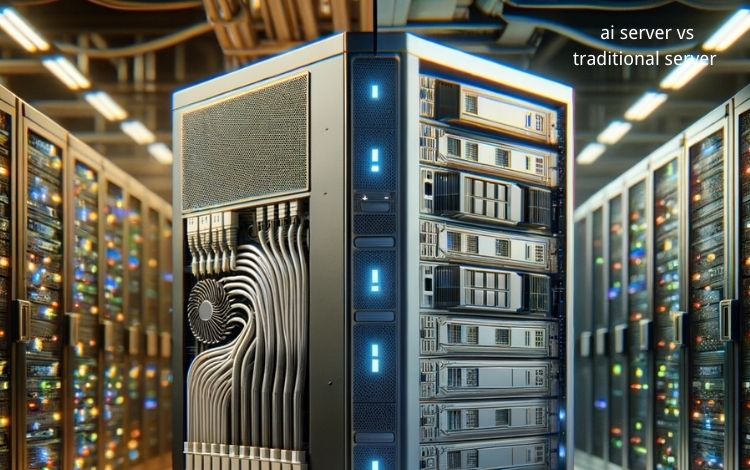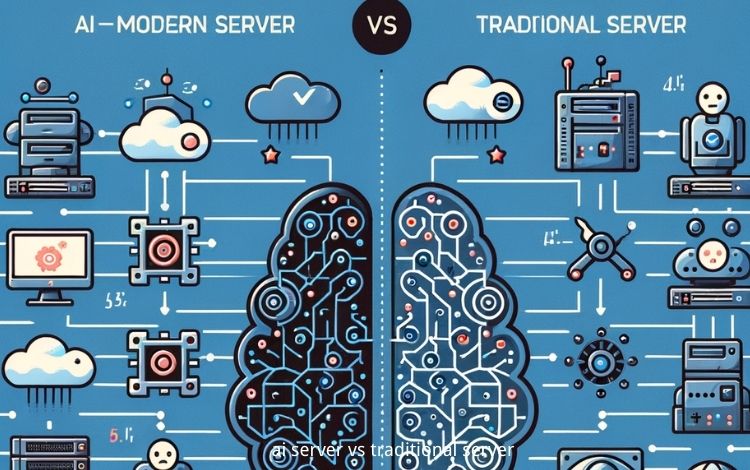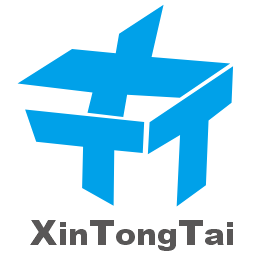AI Server vs Traditional Server: Key Differences and Benefits
In today's rapidly evolving technological landscape, businesses are increasingly relying on servers to manage their growing data and computational needs. While traditional servers have been the backbone of IT infrastructure for decades, the rise of artificial intelligence (AI) has introduced a new breed of servers specifically designed to handle AI workloads. In this article, we'll explore the key differences between AI servers and traditional servers and help you understand which is better suited for your business needs.

What Is a Traditional Server?
A traditional server is a general-purpose machine designed to handle a wide range of computing tasks. These servers have been used for years to manage databases, host websites, run enterprise applications, and support email and file storage. Traditional servers are optimized for tasks that require relatively balanced CPU, memory, and storage resources.
Key Features of Traditional Servers:
Central Processing Unit (CPU)-Focused: Traditional servers rely heavily on CPUs to handle most of their workloads. While these CPUs are powerful, they are not necessarily optimized for parallel processing tasks, such as AI or machine learning.
General Purpose: Traditional servers are versatile and can handle a broad range of applications, from simple file hosting to complex enterprise resource planning (ERP) systems.
Scalability: Traditional servers can scale, but they often require significant configuration and hardware resources to handle massive workloads.
What Is an AI Server?
An AI server is specifically designed to handle the complex computations required for artificial intelligence, machine learning, and deep learning tasks. These servers are optimized for parallel processing, which is essential for training machine learning models and handling large datasets.
Key Features of AI Servers:
GPU-Powered: Unlike traditional servers, AI servers often rely on Graphics Processing Units (GPUs), which can handle thousands of parallel operations simultaneously. This makes them ideal for AI applications that require intensive computations, such as neural networks.
AI-Specific Hardware: In addition to GPUs, AI servers may include specialized hardware like Tensor Processing Units (TPUs) or Field-Programmable Gate Arrays (FPGAs), which are designed to accelerate AI workloads.
Optimized for Data-Intensive Applications: AI servers are built to handle large datasets and complex algorithms, making them ideal for training machine learning models, performing AI inference, and processing massive amounts of data.
AI Server vs Traditional Server: Key Differences
Now that we have a basic understanding of both traditional and AI servers, let's dive into the specific differences between these two types of servers.
1. Processing Power: GPU vs CPU
Traditional Servers: Traditional servers primarily rely on CPUs for processing tasks. While modern CPUs are powerful and can handle multiple threads, they struggle with tasks that require massive parallelism, such as training deep learning models.
AI Servers: AI servers are built around GPUs or other AI-optimized hardware. GPUs excel at parallel processing, allowing them to handle tasks that traditional CPUs would struggle with. For example, a best AI server may be equipped with multiple GPUs, enabling it to process large datasets and train machine learning models faster than a traditional server.
2. Workload Optimization
Traditional Servers: Traditional servers are designed for general-purpose computing. They are excellent for running web applications, databases, and standard enterprise software but are not optimized for the specific needs of AI workloads.
AI Servers: AI servers are optimized for specialized tasks such as deep learning, AI inference, and large-scale data processing. The architecture of an AI server is tailored to handle the specific needs of AI algorithms, making it much more efficient at tasks like training neural networks or processing unstructured data.
3. Scalability
Traditional Servers: Traditional servers can scale, but as the workload increases, they may require more hardware resources, such as additional CPUs or memory, to maintain performance. This can quickly become expensive and complicated to manage.
AI Servers: AI servers are designed to scale horizontally by adding more GPUs or other AI-specific hardware. This makes it easier to handle growing AI workloads without a significant increase in complexity or cost. When you build an AI server, you can easily add more GPUs to increase processing power.
4. Cost Considerations
Traditional Servers: The cost of traditional servers is relatively low compared to AI servers, especially for small to medium-sized businesses that do not require specialized hardware. However, as the need for computational power grows, the cost of scaling traditional servers can increase significantly.
AI Servers: AI servers are generally more expensive than traditional servers due to the inclusion of GPUs and other specialized hardware. However, when considering the AI server cost in the context of AI-specific workloads, the performance benefits often outweigh the higher initial investment. AI servers deliver faster results, which can translate into significant cost savings in the long run, particularly for businesses that rely heavily on data processing and machine learning.

AI Server Architecture: How It Differs from Traditional Servers
The architecture of an AI server is significantly different from that of a traditional server. AI server architecture is designed to prioritize parallel processing, which is essential for handling the massive datasets and computations required for AI tasks.
Key Components of AI Server Architecture:
Multiple GPUs: AI servers typically include multiple GPUs to handle large-scale parallel processing. These GPUs can work together to process vast amounts of data simultaneously, which is crucial for training machine learning models.
High-Speed Networking: AI servers often include high-speed networking components to allow for fast data transfer between GPUs and storage systems. This is especially important for distributed AI workloads, where data needs to be processed across multiple servers.
Advanced Cooling Systems: Given the high power consumption of GPUs and other specialized hardware, AI servers require advanced cooling systems to prevent overheating and ensure optimal performance.
In contrast, traditional server architecture is more focused on balancing CPU, memory, and storage for general-purpose workloads. While traditional servers can be upgraded to include GPUs, this is not their primary focus, and they may not be optimized for the specific needs of AI workloads.
Performance Comparison: AI Server vs Traditional Server
When it comes to performance, the difference between AI servers and traditional servers is stark. AI servers are purpose-built for high-intensity computational workloads, making them far superior for tasks like machine learning, AI inference, and data analysis.
AI Server Performance:
Parallel Processing: AI servers excel at parallel processing, allowing them to handle complex AI workloads such as training deep learning models. A single AI cloud server with multiple GPUs can outperform a traditional server in terms of raw computational power.
Data Handling: AI servers are designed to process large datasets quickly and efficiently. This makes them ideal for AI applications that require real-time data analysis, such as autonomous driving, healthcare diagnostics, and financial modeling.
Traditional Server Performance:
General Tasks: Traditional servers perform well for standard enterprise tasks, such as hosting websites, running databases, or managing email services. However, when it comes to intensive AI workloads, traditional servers fall short.
Limited Parallelism: While traditional servers can handle some level of parallel processing, they are not built to handle the same scale of parallelism as AI servers. This makes them less efficient for tasks like deep learning or AI inference.
AI Server Use Cases
Given their specialized capabilities, AI servers are used in a wide range of industries and applications.
1. Healthcare
AI servers are used in healthcare for tasks such as medical imaging analysis, drug discovery, and personalized treatment planning. The ability of AI data servers to process large amounts of patient data quickly and accurately makes them invaluable in the healthcare industry.
2. Finance
In finance, AI servers are used for algorithmic trading, fraud detection, and risk management. AI-powered systems can analyze vast amounts of financial data in real-time, allowing businesses to make faster and more informed decisions.
3. Autonomous Vehicles
AI servers are critical for the development of autonomous driving systems. These servers process data from sensors and cameras in real-time, allowing vehicles to make split-second decisions and navigate safely.

Choosing the Right Server for Your Business
When deciding between an AI server and a traditional server, it's essential to consider the specific needs of your business.
For General Workloads: If your business primarily needs to run websites, manage databases, or support email systems, a traditional server will likely meet your needs at a lower cost.
For AI Workloads: If your business is focused on AI, data analysis, or machine learning, an AI server is the better choice. While the initial investment may be higher, the performance gains will make up for the cost in the long run.
At Shenzhen Xintongtai Technology, we offer a wide range of AI server solutions. As one of the top AI server manufacturers, we provide cutting-edge hardware designed to meet the specific needs of AI workloads. Whether you're looking for a China AI server or need a custom AI cloud server solution, we can help you find the right fit for your business.
Conclusion
In the battle between AI servers and traditional servers, the right choice depends on your specific workload. While traditional servers are great for general computing tasks, AI servers are built for the future, offering unparalleled performance for machine learning, data analysis, and AI inference. As AI continues to transform industries, investing in the right server architecture will be crucial for staying competitive in the years to come.
FAQ
1. What is the best AI server for machine learning?
The best AI server for machine learning typically includes multiple GPUs and is optimized for parallel processing. Servers like NVIDIA’s DGX systems are popular choices for AI workloads.
2. How much does an AI server cost?
The AI server cost can vary significantly based on the hardware specifications. High-end servers with multiple GPUs can cost tens of thousands of dollars, while entry-level AI servers are more affordable.
3. Can I build my own AI server?
Yes, it is possible to build an AI server by selecting the right components, such as GPUs, CPUs, and storage. However, it requires careful planning to ensure compatibility and optimal performance.
4. What industries benefit most from AI servers?
Industries such as healthcare, finance, autonomous driving, and manufacturing benefit the most from AI servers due to their need for real-time data processing and complex computations.
5. What is an AI cloud server?
An AI cloud server is a server hosted in the cloud and optimized for AI workloads. These servers allow businesses to access high-performance computing resources for AI tasks without needing to invest in on-premise hardware.
